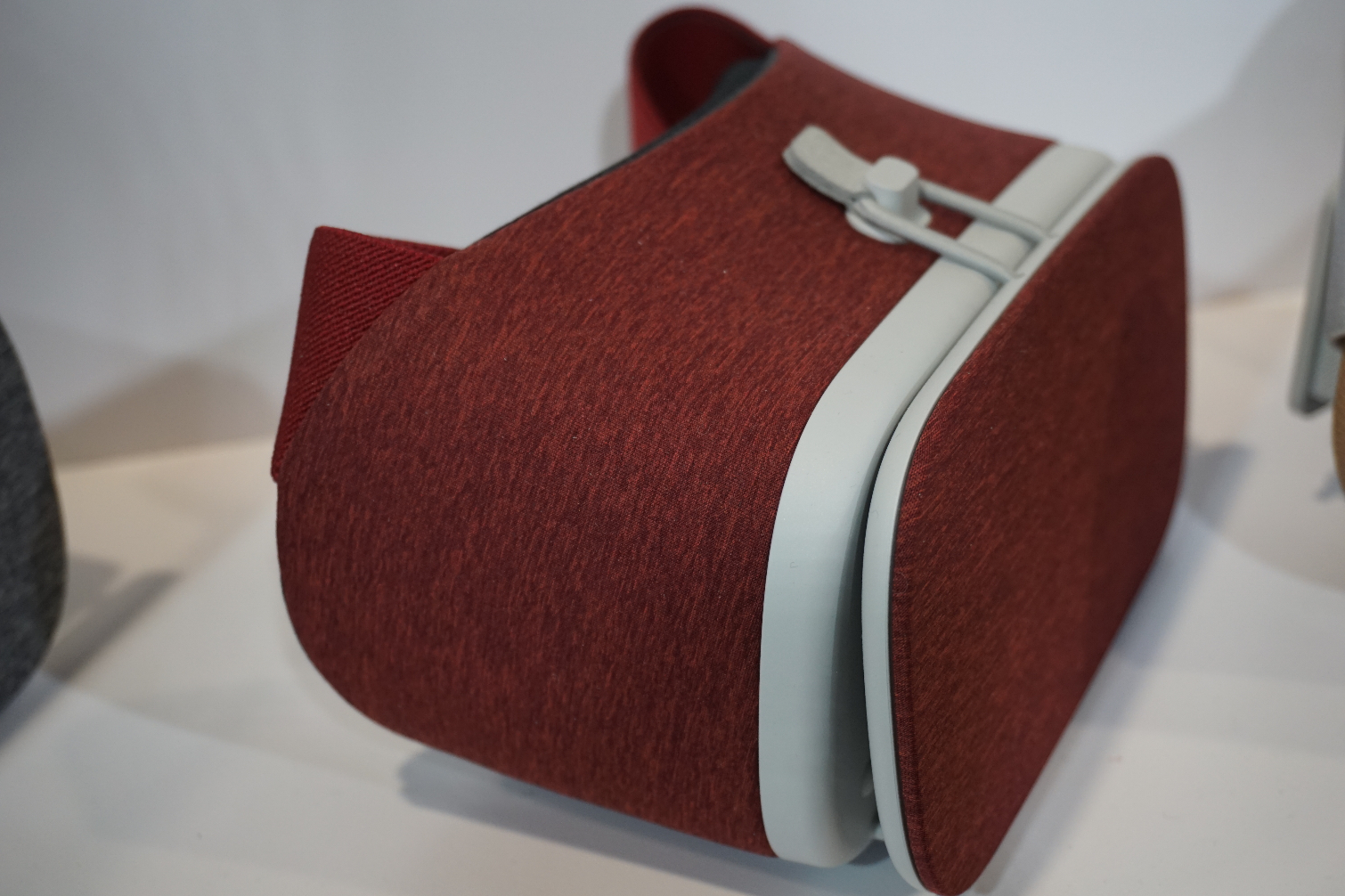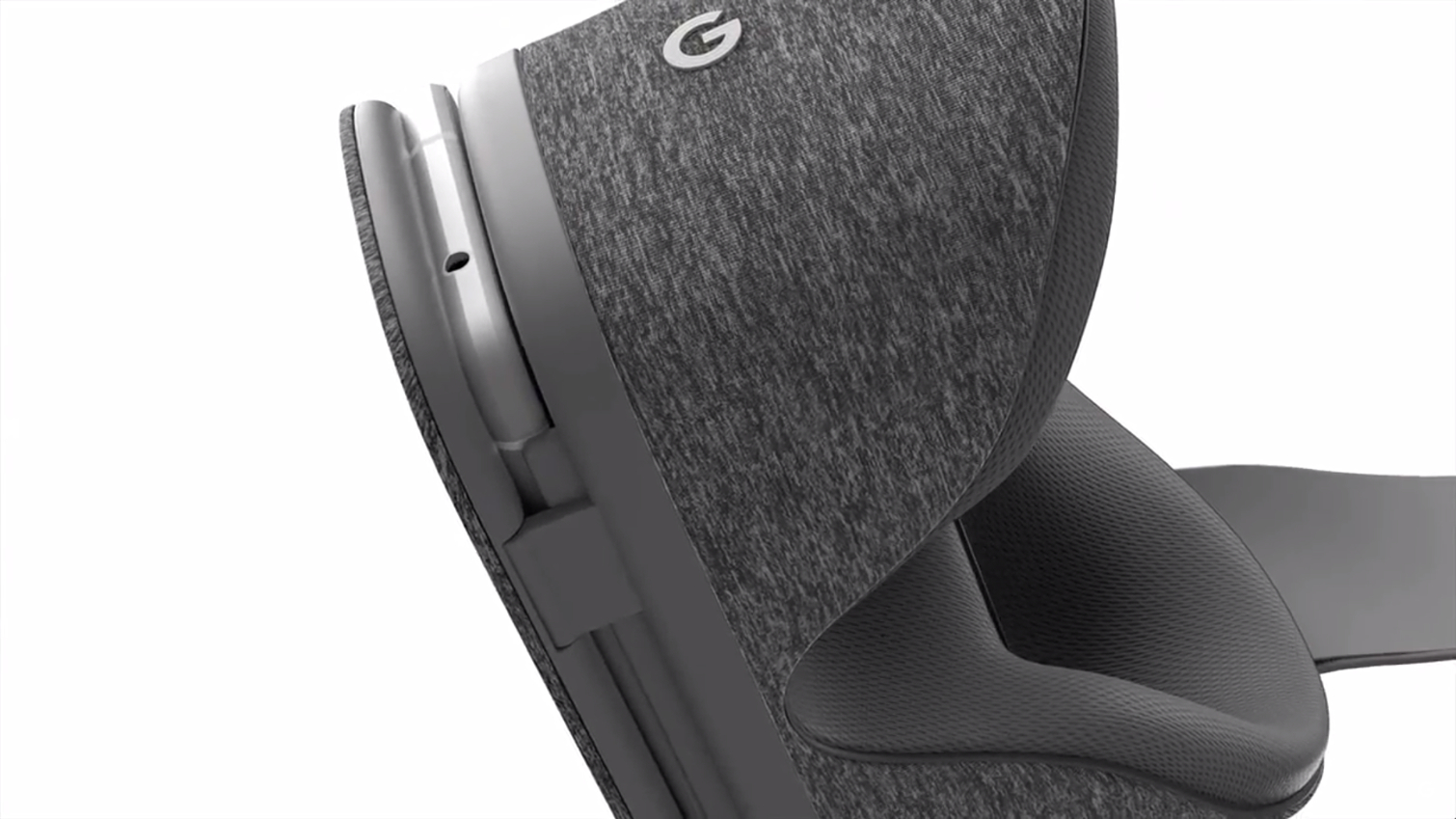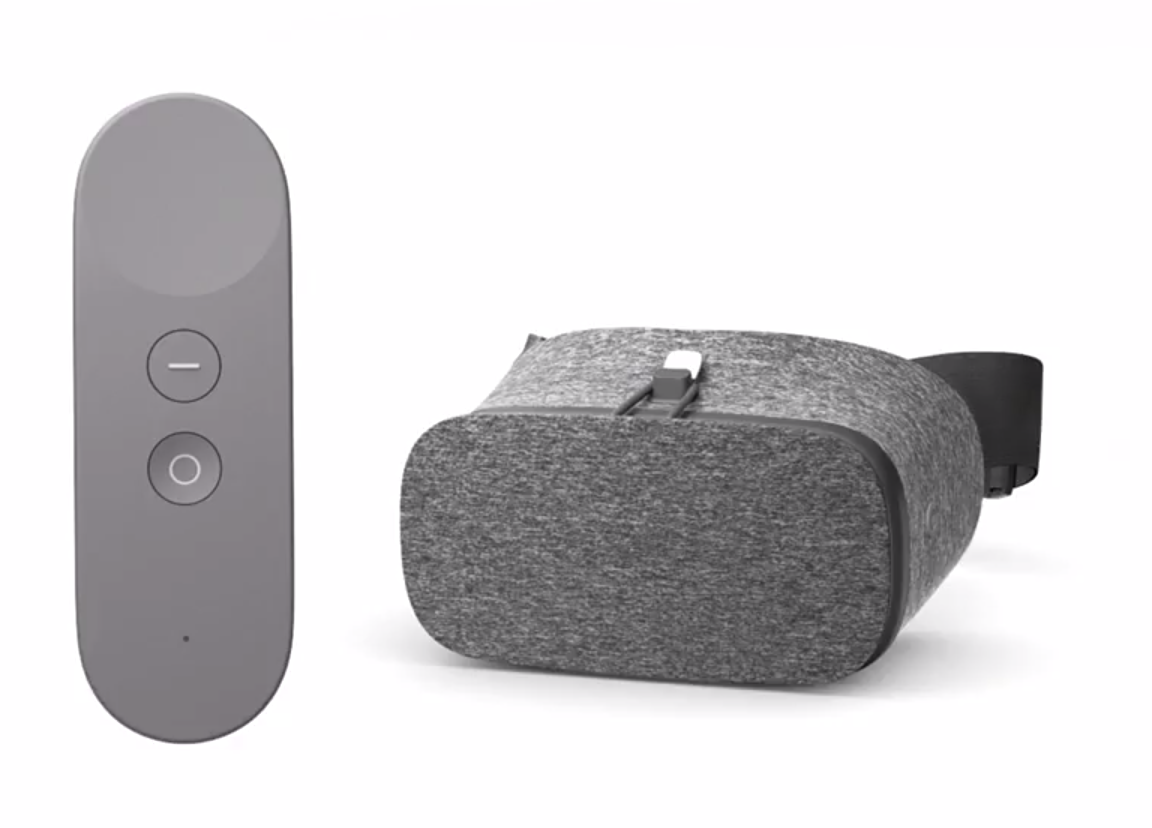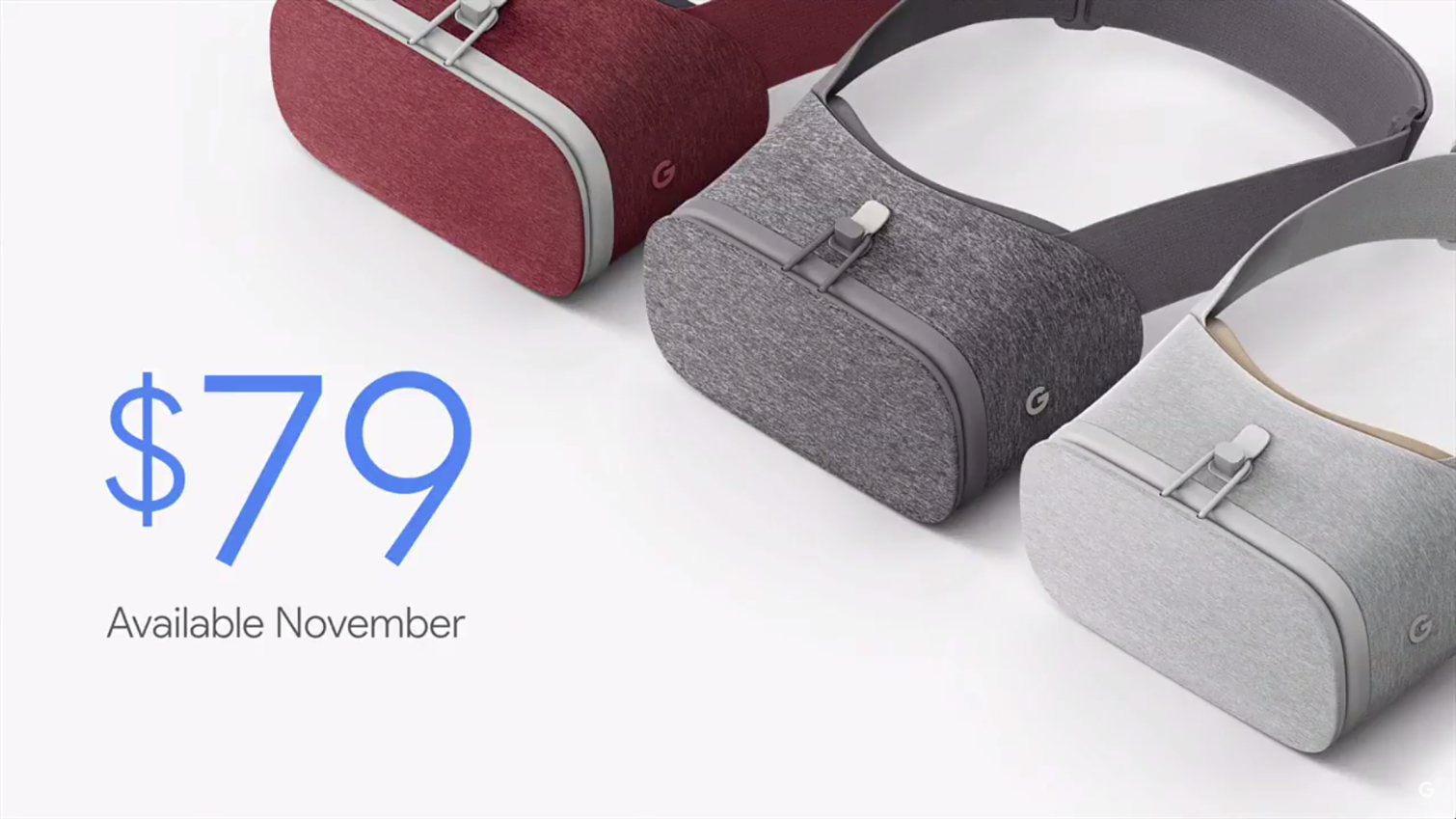Google Daydream Made Of Fabric, Costs Under $100, Available In November
In May during Google IO 2016, Google revealed the Daydream platform, the company’s answer to Samsung and Oculus’s Gear VR. At IO, Google’s Clay Bavor explained that the Daydream platform would be open to all Android smartphone manufacturers as long as they adhered to strict minimum hardware guidelines. Google also talked about a reference HMD design that smartphone makers could use to build their own Daydream HMD.
Google wasn’t ready to talk about the release schedule or go into details about the Daydream HMD in May, but the company is gearing up for the launch of Google Pixel, the first Daydream ready smartphone, and it’s finally willing to spill the beans—at least some of them. Google talked a little bit about its first Daydream HMD along with the Pixel smartphone reveal.
Google is taking on the VR market with vigor. The company took inspiration from Oculus in its Daydream HMD design, but not from the Gear VR, as you might expect. Oculus designed the Rift with a fabric outer shell that is light, breathable, and soft. Google chose to make its mobile HMD out of fabric for similar reasons. Google didn’t go into specifics about the materials that it used to build the Daydream headset, but the company did say that it “worked with clothing designers and makers” to ensure that the HMD is as comfortable as possible. Google said you could keep the HDM clean with a washcloth, and you can remove the face cushion and toss it into the washing machine.
Google plans to offer the headset in three different color trims (Slate, Snow, and Crimson) but the company is limiting the initial release to the slate trim, which is two shades of gray. The snow version is light gray with a beige cushion, and the Crimson edition is red with white trim.
The Daydream headset is a fairly light device, which should contribute to its overall comfort. The Daydream HMD weighs approximately 300 grams with the Pixel smartphone inside, which is less than the Gear VR does without a phone inside. Google also made sure that the HMD could accommodate eyeglasses, unlike the Gear VR.
Google also spent time and resources to ensure that the end user experience is as trouble-free as possible. The Daydream HMD doesn’t require a physical connection to your phone, so you won’t have to fiddle with a cable or an adapter. Your phone will automatically connect through an NFC connection when you place it inside the headset.
The lack of connectors makes placing your phone into the HMD a snap. Simply flip open the front panel, which is held by a latch, place your phone inside, and close the HMD again. You don’t even have to fiddle with the placement of the phone to ensure it's centered. Google implemented an auto-alignment system that does the work for you. The phone calibrates itself for the HMD with the help of two capacitive markers inside the HMD that touch the screen. The software splits the image to either side of those markers, which ensure you always have a centered view.
Get Tom's Hardware's best news and in-depth reviews, straight to your inbox.
Unlike other mobile VR solutions, Daydream includes a tracked motion controller that connects to your phone with low-latency BLE Bluetooth to help you interact with the virtual world. The controller includes a trackpad and two buttons on the face, and it features nine IMU sensors (a 6-axis gyroscope and a 3-axis magnetometer) that calculate its spatial orientation. Google said the controller tracking is accurate enough to draw with or swing around.
Google is building partnerships to ensure that you’ll have content to consume with Daydream when the headset comes out later this year. The company highlighted a few notable experiences that are coming to Daydream this year. You’ll be able to explore Star Chart, which lets you explore the solar system and learn about the constellations. CCP Games will launch Gunjack 2, the sequel to its hit VR wave shooter, and a VR experience that ties into the magical world of JK Rowling’s Fantastic Beasts And Where To Find Them debut on Daydream this fall. Daydream also features the streaming video services from Netflix, Hulu, and HBO, and the New York Times’ VR documentary films.
As you would expect, Google Daydream will also support Google’s products. You’ll be able to watch movies through Google Play Movies, experience your photos like you’ve never seen them inside Google Photos or wander around the streets of the world with Street View VR. You can also take in YouTube content through Daydream, including traditional video, 360-degree video, and stereoscopic video formats.
Google plans to release the slate Daydream HMD in November for $79. Google didn’t say when it would release the snow and crimson trims.
Kevin Carbotte is a contributing writer for Tom's Hardware who primarily covers VR and AR hardware. He has been writing for us for more than four years.
-
Jeff Fx Of course Gear VR actually exists now, and has a pretty big app store. Google has a long way to go before this becomes a viable alternative.Reply -
bloodroses I can just see the headlines now: "Google gets sued by Apple, Samsung, and Nintendo for patent infringement" ... lolReply
But seriously, has anyone seen the Pixel? That think looks just like an iPhone.
At least this headset includes a 'wiimote' like controller, unlike Samsung's offering. :) -
jasonelmore are you kidding? pixel is ugly, it looks nothing like a iphone. It has a big plastic square on the back side cut into the metal, because, they dont know how to do antenna's lines like apple. The fingerprint scanner on the back is also much different than the iphone.Reply -
Jeff Fx Reply18685979 said:are you kidding? pixel is ugly, it looks nothing like a iphone. It has a big plastic square on the back side cut into the metal, because, they dont know how to do antenna's lines like apple. The fingerprint scanner on the back is also much different than the iphone.
He was probably looking at the front, and it does look iPhone-like, because smart phones have converged on that look, because it's a good look. -
bloodroses Reply18686057 said:18685979 said:are you kidding? pixel is ugly, it looks nothing like a iphone. It has a big plastic square on the back side cut into the metal, because, they dont know how to do antenna's lines like apple. The fingerprint scanner on the back is also much different than the iphone.
He was probably looking at the front, and it does look iPhone-like, because smart phones have converged on that look, because it's a good look.
We were looking at the front. Outside the little circle, they look identical. Me and my friend at work compared his iPhone to pictures of the Pixel and we honestly couldn't tell the difference outside that.
We were thinking that this was done to make the iPhone possibly compatible with the Daydream. -
joshyboy82 Which pixel phone does it use? the 1080p version wouldn't make a stellar viewing experience. I have a Nexus 5x, and I also have a decent library from the Play store, but I don't think the two match up in this device. The 4k version, so I could actually use my HD content, sure. The price seems right for this.Reply -
TheDane The price is OK. But there would be no positional tracking which is one of the features that really makes VR work for me (I have both Gear VR and Rift).Reply -
bloodroses Reply18687709 said:They were all beat to the punch lol.
LOL, I have the modern version of that
-
tntom Gear VR is a big step up from cardboard. I suspect this will rival the Gear VR. My LGG3 with its 1440 x 2560 (~538 ppi pixel density) in Cardboard makes me nauseous for half a day. Gear VR with the GS7E felt comfortable for an hour+. Daydream compatibility requires that the handset has equal or better motion and frame latency. So it should be comfortable. I'm not sure I would like the lower pixel density of the the FHD Pixel.Reply





